Selecting the appropriate laser engraver can determine the success of your projects whether you are working on precise designs, marking parts for industrial use, or engraving mundane objects. There are three major kinds of laser engravers: Fiber, CO2, and UV. Each possesses distinct advantages and applications. Understanding their unique strengths will help you figure out which one best suits your requirements. This guide aims to highlight the primary differences among these technologies, their functions, the materials they work well with, and their relevant industries. By the end, you will know which laser engraver aligns perfectly with your objectives.
What Are the Differences Between Fiber Laser, CO2 Laser, and UV Laser?
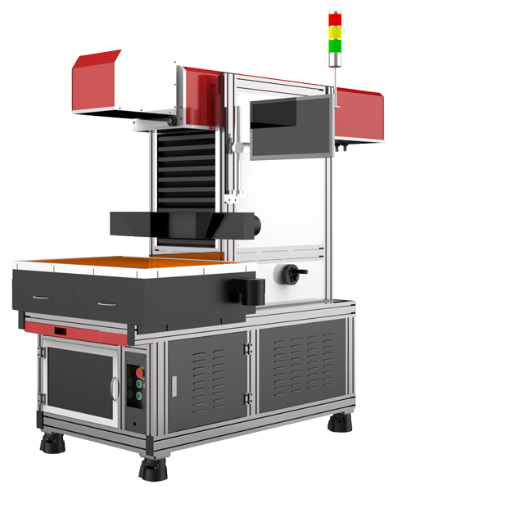
Fiber lasers, CO2 lasers, and UV lasers differ primarily in their wavelengths, making each suitable for specific applications:
- Fiber Laser: Ideal for marking metals and some plastics, fiber lasers operate at a shorter wavelength, allowing for precision and deep engraving. They are highly durable and excel in industrial settings.
- CO2 Laser: Best for non-metal materials like wood, glass, acrylic, and leather, CO2 lasers use a longer wavelength. They are versatile and widely used in craftwork and signage production.
- UV Laser: Operating at an even shorter wavelength, UV lasers are perfect for delicate materials like glass, ceramics, and certain plastics. They provide high precision with minimal thermal damage, making them ideal for intricate or heat-sensitive applications.
Each type is optimized for specific materials and tasks, so selecting the right one depends on your project requirements.
Understanding Laser Wavelength and Its Impact on Materials
Laser wavelength plays a crucial role in determining the interaction between the laser beam and the material being processed. Different wavelengths are absorbed and transmitted differently by various materials, directly influencing efficiency and precision.
For instance, CO2 lasers, which typically operate at a wavelength of 10.6 microns, are highly effective for materials such as wood, acrylic, glass, and leather due to their strong absorption in these mediums. On the other hand, fiber lasers, emitting at a near-infrared wavelength of around 1.06 microns, excel at cutting and engraving metals, as metals strongly absorb this specific wavelength.
A notable phenomenon is the wavelength-dependent penetration depth. Shorter wavelengths, such as those produced by UV lasers (355 nm), exhibit higher photon energy, which allows for precise micromachining of heat-sensitive materials like ceramics and certain polymers. Additionally, shorter wavelengths reduce heat dissipation into the surrounding areas, minimizing the risk of damage to delicate components and enhancing edge quality.
Data collected from industry advancements show that wavelength matching can improve processing efficiency by as much as 20%-40% when compared to non-optimized systems. For example, in cutting applications, the absorption rate of aluminum can exceed 90% with a fiber laser, whereas it would be significantly lower with a CO2 laser.
Thus, understanding and selecting the appropriate laser wavelength for a specific material is paramount to achieving high-quality results, reducing waste, and maximizing production efficiency.
Comparing Laser Power and Application Areas
When evaluating laser power, it is essential to consider both the material being processed and the specific application requirements. Low-power lasers, typically under 1 kW, are ideal for precision tasks such as engraving, marking, and cutting thin materials. They offer fine control and minimal thermal impact, making them suitable for industries like electronics and jewelry manufacturing. For instance, in microelectronics, low-power lasers can achieve dimensional accuracies of up to ±10 µm, ensuring intricate detailing.
On the other hand, high-power lasers, ranging from 1 kW to over 10 kW, are indispensable for heavy-duty applications that demand faster processing speeds and deeper penetration. These are extensively utilized in industries such as automotive and aerospace for cutting, welding, and additive manufacturing of thick or durable materials like steel and titanium. For example, a 10 kW laser system can cut carbon steel sheets up to 30 mm thickness with remarkable precision and speed.
Additionally, advancements in adjustable laser power settings allow users to employ a single system across varying applications. Machines with power adjustment capabilities can transition between tasks, such as switching from engraving delicate materials to cutting robust metals. This versatility not only reduces operational costs but also enhances productivity across industries.
Analyzing Cutting and Engraving Capabilities
Modern laser systems are equipped with cutting-edge technology that ensures precision and efficiency in both cutting and engraving applications. These systems can handle a wide variety of materials, including metals, wood, plastics, glass, and even composite materials. For instance, CO2 lasers are highly effective for non-metallic materials such as acrylics and plywood, while fiber lasers excel at cutting metals like stainless steel and aluminum with extreme accuracy.
Recent innovations have led to higher power outputs and improved beam quality, enabling faster processing speeds. For example, high-power laser systems can achieve cutting speeds of up to 30 meters per minute for thin materials, making them ideal for large-scale production environments. Furthermore, engraving resolution has reached unprecedented levels, with systems now capable of achieving up to 1,000 DPI (dots per inch) for intricate designs and patterns.
Additionally, adjustable pulse frequencies and enhanced software integration provide users with greater control over the depth and detail of engraved patterns. These features are particularly advantageous for industries like electronics, where precise markings on fragile components are critical, or in luxury goods manufacturing, where flawless engravings elevate aesthetic appeal.
The inclusion of real-time monitoring and AI-driven process optimization has further refined cutting and engraving processes. These advancements ensure consistent quality and minimize errors, resulting in decreased material waste and reduced operating costs. This combination of speed, precision, and adaptability positions modern laser technology as an essential tool for industries ranging from manufacturing to artisanal crafts.
How Does Each Laser Engraver Work?
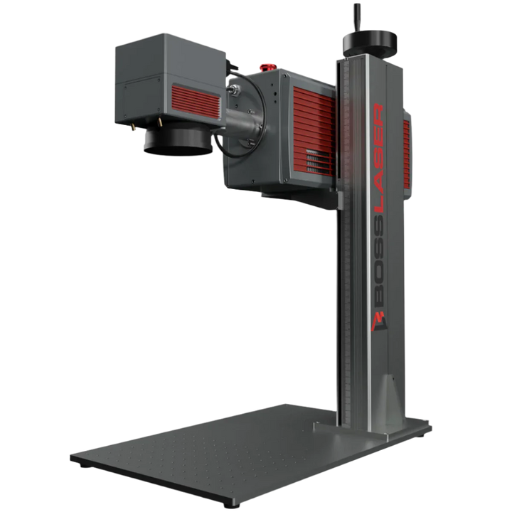
Laser engravers function by focusing a high-energy laser beam onto the surface of a material. This beam either removes or alters the material to create precise designs, patterns, or markings. The process typically involves three key steps:
- Laser Generation – A laser source produces a concentrated beam of light with high intensity.
- Beam Delivery – The beam is directed through mirrors or lenses to the designated area of the material.
- Engraving – The laser interacts with the material, either vaporizing, burning, or etching it to form the desired engraving.
Different types of laser engravers, such as CO2, fiber, and diode lasers, operate on similar principles but vary in their power, speed, and compatibility with materials. These variations make them suitable for a wide range of applications from industrial manufacturing to detailed artistic projects.
Mechanics of a CO2 Laser Engraving Machine
A CO2 laser engraving machine operates using a gas laser, where carbon dioxide gas serves as the primary lasing medium. This type of laser operates on an infrared wavelength, typically around 10.6 microns, making it highly effective for engraving or cutting non-metal materials, such as wood, acrylic, glass, leather, and certain plastics. The process is driven by a precise combination of components and mechanisms:
- Laser Tube and Power Source
The CO2 laser tube generates a high-intensity laser beam by electrically exciting the carbon dioxide gas mixture. A high-voltage power supply provides the energy required for this excitation. The power of the laser tube, typically measured in watts, can range from 40W for small desktop engravers to over 150W for industrial-grade machines. Higher wattages allow for deeper cuts and faster processing speeds.
- Optical System
The laser beam generated by the tube is guided through a series of mirrors and lenses, ensuring precision and focus. The mirrors direct the beam towards the material, while the focusing lens converges the beam onto a single, fine point. This concentrated energy allows the laser to heat, vaporize, or melt the surface with remarkable accuracy.
- Cooling System
Due to the high energy involved, the CO2 laser tube generates significant heat. A water or air-cooling system is used to prevent the tube from overheating and to maintain consistent performance. For instance, professional-grade machines typically incorporate water chillers to stabilize temperatures during extended operations.
- Motion System and Software
The engraving head or laser beam is often mounted on a gantry system that moves along X and Y axes. This movement is controlled by stepper motors or servo motors, which provide precise positioning based on the design input. Advanced software integrates seamlessly with the machine, allowing users to upload vector files or bitmap images that dictate the laser engraving path.
- Air Assist System
Many CO2 engraving machines include an air assist system that directs a focused stream of air onto the material surface during engraving. This feature helps clear away debris, reduce the risk of overheating, and improve the overall quality of the engraving or cut.
CO2 laser engraving machines are renowned for their versatility and reliability. On average, the engraving speed can range from 300 mm/s to over 1,000 mm/s, depending on the material and machine configuration. The precision of these machines typically allows for resolutions as high as 1,000 DPI (dots per inch), delivering intricate designs with sharp detail. These attributes make CO2 laser engravers indispensable in industries such as signage production, custom jewelry making, and packaging.
Functionality of Fiber Laser Engravers
Fiber laser engravers are highly efficient tools that utilize a specialized optical fiber, doped with rare earth elements like erbium, ytterbium, or thulium, to generate an intense and focused laser beam. Known for their exceptional precision and speed, fiber laser engravers are ideal for marking, engraving, and cutting hard materials such as metals, ceramics, and certain plastics. These machines operate at wavelengths around 1,064 nanometers, which allows for superior absorption rates in metals compared to other laser types, ensuring clean and detailed finishes.
One of the standout features of fiber laser engravers is their remarkable speed. Many modern fiber lasers can achieve marking speeds exceeding 7,000 mm/s, making them some of the fastest engraving solutions available. Additionally, they offer a high degree of energy efficiency, as much as 30-50% more than CO2 lasers, leading to reduced operational costs and environmental impact. The lifespan of the fiber laser module is also impressive, often exceeding 100,000 working hours, making these engravers a long-term investment for businesses.
Applications for fiber laser engravers span industries like automotive, electronics, aerospace, and medical devices, where precision and durability are critical. For example, they excel in engraving serial numbers, barcodes, and intricate patterns on materials like stainless steel, titanium, and aluminum. With minimal maintenance requirements and the ability to process a wide range of materials, fiber laser engravers have become a staple in high-precision manufacturing and industrial environments.
How UV Laser Marking Machines Operate
UV laser marking machines utilize ultraviolet light with an exceptionally short wavelength, typically around 355nm, to achieve high precision and minimal heat impact during marking processes. These machines rely on the principle of “cold marking,” as the low wavelength prevents excessive heating of the material’s surface, thereby reducing thermal deformation or damage.
The process begins with a high-frequency UV laser beam directed at the material’s surface. This beam causes a photochemical reaction, particularly on sensitive materials like plastics, glass, or ceramics. Because of the short pulse duration and high photon energy, the UV laser directly disrupts molecular bonds in the material, resulting in clear and permanent markings without discoloration or cracking. This precise method enables the creation of fine details, including micro-sized text, intricate patterns, and high-quality barcodes.
UV laser marking machines are widely known for their versatility and reliability, with applications spanning industries like electronics, pharmaceuticals, and automotive manufacturing. For instance, in the electronics industry, UV lasers are frequently used to mark circuit boards and delicate semiconductor components without compromising their integrity. Research has shown that UV lasers achieve marking accuracies as fine as 20 microns, making them indispensable for industries with critical precision requirements.
Furthermore, these machines are remarkably energy-efficient and produce minimal waste, aligning with modern sustainability standards. Their ability to process sensitive materials with no thermal damage opens doors to an expanding range of applications, making UV laser marking a vital tool in cutting-edge manufacturing technologies.
Which Laser System Is Best for Metal Engraving?
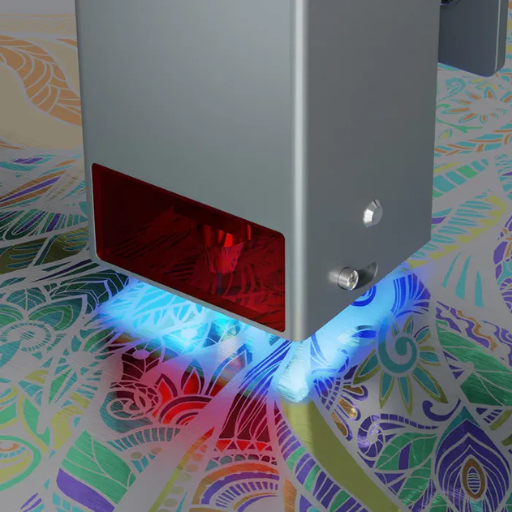
The selection of a metal engraving laser system differs with the application and the material at hand. Fiber lasers are widely accepted for engraving metals since they work well with stainless steel, aluminum, and even gold. Fiber lasers also engrave faster while achieving permanent marks that withstand material stress and are in stark contrast to the surface of the item. For less destructive processes, such as engraving the anodized and coated metals, UV lasers would also work well because they are very precise and do not damage the surface.
Advantages of MOPA Fiber Laser for Metal
- High Precision and Accuracy
The MOPA fiber laser allows for incredibly precise engraving, even on intricate designs, thanks to its adjustable pulse duration. This flexibility ensures that delicate patterns can be produced without compromising accuracy, making it ideal for fine metal crafts and detailed applications.
- Versatility in Marking Materials
It can handle a wide range of metals, including stainless steel, aluminum, titanium, brass, gold, and alloys. Additionally, it performs exceptionally well on coated and anodized metals, creating high-quality and consistent marks across varied surfaces.
- Adjustable Pulse Duration for Diverse Applications
One of the standout features of MOPA fiber lasers is the adjustable pulse duration, which allows for greater control over marking effects. This makes it suitable for dark anodized aluminum marking, carbon migration, and achieving different contrast levels without causing thermal damage.
- Excellent Heat Control with Minimal Impact
MOPA fiber lasers generate controlled heat to ensure smooth, clean engravings without deforming the material. This feature significantly reduces the chances of cracks, especially with sensitive or thinner metals, ensuring structural integrity.
- Faster Processing Speeds
Equipped with advanced optics and a higher marking precision, the MOPA fiber laser delivers faster engraving speeds compared to traditional laser systems. This enhances productivity, making it particularly useful for industrial-scale operations.
- Brilliant Color Marking on Metals
A unique advantage of MOPA fiber lasers is their ability to create colorful engravings, particularly on stainless steel. By meticulously adjusting settings, vibrant and highly aesthetic patterns can be engraved that add artistic value to the metal product.
- Durable and Permanent Markings
The marks created by MOPA fiber lasers are not only resistant to abrasion but are also unaffected by external factors like heat, chemical exposure, and corrosion, ensuring long-lasting results.
- Energy Efficiency
MOPA fiber lasers consume significantly less energy compared to other laser technologies, making them both cost-effective and environmentally friendly. They convert energy efficiently into laser output, reducing operational costs.
- Low Maintenance and Long Lifespan
With a high lifespan of up to 100,000 hours of operation, MOPA fiber lasers demand minimal maintenance. Their robust design ensures that downtime is reduced, allowing for consistent performance over extended periods.
Each of these advantages makes the MOPA fiber laser an indispensable tool for modern metal engraving applications, seamlessly blending efficiency with quality results.
Is a CO2 Laser Suitable for Metal?
CO2 lasers are widely used for cutting and engraving, but when it comes to working with metal, their suitability depends on specific factors. Unlike fiber lasers, CO2 lasers operate at a wavelength of 10.6 micrometers, which makes them more effective for non-metallic materials such as wood, acrylic, and glass. However, with the right settings and additional components, CO2 lasers can process certain types of metals—primarily thin sheet metals or metals with a highly reflective coating.
To efficiently cut or engrave metal using a CO2 laser, a power output of at least 150W is typically required, and even then, reflective metals like aluminum or copper can pose challenges due to the potential for reflected laser energy damaging the machine’s optics. For better performance, CO2 lasers often require the application of laser-engraving sprays or coatings, which improve the laser’s absorption by creating a darker, more receptive surface.
Statistical comparisons reveal that fiber lasers are up to 3 times more energy-efficient when processing metals compared to CO2 lasers, as they deliver more concentrated energy to the metal surface at a shorter wavelength of 1.064 micrometers. While CO2 lasers can achieve sufficient cutting quality on metals like stainless steel or mild steel, they often struggle with speed and overall efficiency when compared to fiber lasers in professional industrial applications.
Ultimately, while CO2 lasers are technically capable of working with certain metals under the right conditions, they are not the most optimized choice for metal processing tasks. Fiber lasers remain the industry standard for precision, speed, and cost-effectiveness when dealing with metals, especially for businesses demanding consistent and high-performance results.
Can UV Lasers Effectively Engrave Metal?
UV lasers, also known as ultraviolet lasers, operate at shorter wavelengths (typically around 355 nm) compared to CO2 or fiber lasers. These lasers are highly precise due to their smaller spot sizes, making them ideal for intricate and detailed applications. However, when it comes to engraving metal, UV lasers face considerable limitations.
Unlike fiber lasers, which are specifically designed to interact effectively with metal surfaces, UV lasers excel at working with materials like plastics, glass, and certain ceramics. Their lower power output compared to fiber lasers makes it challenging to directly engrave or mark metals efficiently. Effective engraving on metal surfaces often requires intensive laser energy to ablate or etch the material, something UV lasers typically lack.
That said, UV lasers can mark metals through specialized methods such as surface coating treatments or the use of marking agents. For example, metals coated with a photosensitive layer can respond well to UV laser marking, creating a high-contrast design. This approach is more suited for applications requiring precise, superficial markings rather than deep engravings.
Data suggests that UV lasers are heavily used in the electronics and medical industries for marking delicate components, highlighting their strength in precision over raw power. While they are not generally an optimal solution for metal engraving, their ability to produce clean, fine markings on other materials showcases their specialized capabilities.
What Are the Cost Considerations for Each Laser Machine?
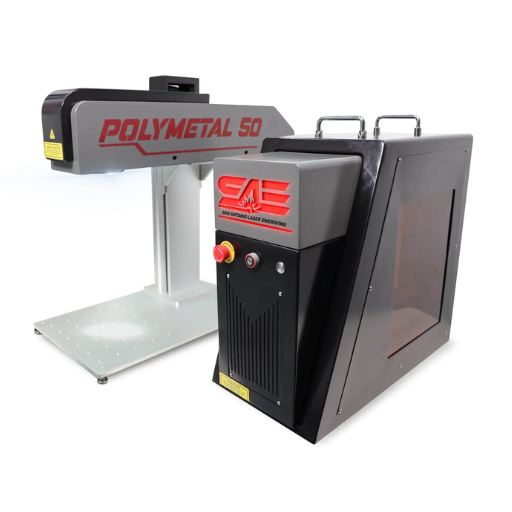
The cost considerations for each laser machine depend on multiple factors, including the type of laser, its power, and its intended application. Fiber lasers are typically more expensive upfront due to their advanced technology and durability, but they offer low maintenance costs and high efficiency, making them a cost-effective choice for industrial use over time. CO2 lasers generally have a lower initial cost and are suitable for a variety of materials, but they may require more frequent maintenance, which can increase long-term expenses. UV lasers, on the other hand, fall on the higher end of the price spectrum due to their specialized precision capabilities.
Initial Investment and Long-Term Costs
When considering the purchase of a laser system, it is essential to weigh both the upfront investment and the long-term operational expenses. Fiber laser systems, for example, typically have a higher initial cost ranging from $20,000 to $200,000 depending on the specification and power output. However, they often prove more cost-effective over time due to their energy efficiency, lower maintenance needs, and minimal consumable requirements.
UV laser systems, with their precision and ability to work with delicate materials, command a higher initial price, often starting at $30,000 and exceeding $250,000 for industrial-grade models. These systems enhance productivity in industries where accuracy is paramount, such as semiconductor manufacturing or medical device production, but they may involve additional costs related to specialized components or periodic calibration.
From a long-term perspective, energy consumption is a notable consideration. Fiber lasers can run on energy-efficient modes, typically consuming 50% less power than CO2 lasers for equivalent tasks. This reduced energy demand translates into significant savings over the machine’s lifespan, particularly in high-production environments. Maintenance costs also differ substantially between systems. While CO2 lasers require periodic gas replacement and optical realignment, fiber lasers use solid-state technology, reducing downtime and associated service needs.
Overall, buyers are encouraged to analyze both direct and indirect costs, including installation fees, customization needs, and potential subsidies or incentives available in certain regions for energy-efficient systems. Making a sustainable and cost-effective choice requires a comprehensive understanding of these factors tailored to the specific application and usage demands.
Maintenance and Operating Expenses
When evaluating maintenance and operating expenses, it’s essential to consider the long-term financial and operational impact of the chosen system. Modern systems, particularly those utilizing advanced energy-efficient technologies, often require significantly less maintenance compared to older models. For example, systems with solid-state components can reduce maintenance needs by up to 30% due to fewer moving parts, which translates to reduced wear and tear.
Energy consumption is a key factor in operating expenses. Studies show that energy-efficient HVAC systems can lower electricity costs by 20–40% annually when compared to standard models, depending on usage patterns and climate conditions. Similarly, incorporating smart controls and automation to regulate performance can further reduce energy waste, leading to annual savings ranging from $200 to $500 for an average industrial or residential setup.
Additionally, proper maintenance routines can directly influence overall expenses. Scheduling regular inspections, such as filter replacements or coil cleaning, can extend the lifespan of the equipment by 5–10 years, ultimately lowering the cost per year of ownership. Avoiding deferred maintenance is also critical as repairs or replacements tend to be significantly more expensive when systems fail unexpectedly.
Lastly, consider the availability of manufacturer warranties and service plans, which can offset unexpected costs. Comprehensive warranties often cover significant repairs within the first 5–10 years of operation, easing the financial burden while enhancing overall reliability.
By strategically balancing upfront investments with reduced maintenance and energy costs, users can achieve optimal performance while minimizing long-term expenses.
Which Type of Laser Is Best for Different Materials?
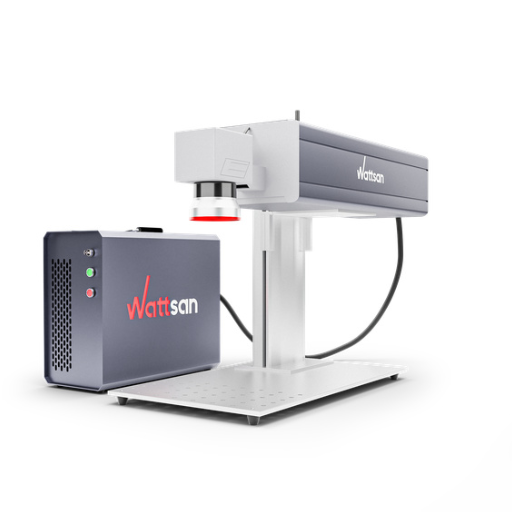
The properties of each specific material determines what kind of laser to use. For metals, fiber lasers are quite efficient due to the precision and skill with which they handle reflective materials. CO2 lasers work with non-metals like wood, plastic, and glass, as they engrave and cut without rough edges. The best soft material laser markers such as ceramics and plastics are from UV lasers since they provide the requisite accuracy without the overheating that most other lasers would. As a general guideline to optimizing results while minimizing waste, the laser must always be tailored to the material at hand.
Plastic and Organic Materials: Best Laser Options
When working with plastic materials, CO2 lasers are often the most effective choice. These lasers operate at a wavelength of approximately 10.6 microns, which is readily absorbed by a wide range of plastic types, including acrylics, polycarbonates, and polyethylene. This absorption ensures clean, precise cuts and engravings without excessive heat distortion. Additionally, CO2 lasers can process intricate patterns at speeds exceeding 300 inches per second, making them ideal for industrial applications where efficiency is paramount.
For organic materials such as wood, paper, leather, and textiles, CO2 lasers once again stand out. Their ability to vaporize material with minimal charring ensures smooth cuts and detailed engravings. For example, wood engraving with a CO2 laser can achieve resolutions upwards of 1200 dpi, allowing for stunningly detailed designs. For delicate organic materials such as natural fabrics or softwoods, lasers with lower power settings (10-40 watts) help prevent burning while maintaining high precision.
Alternatively, for specialized plastic types or sensitive organic materials, UV lasers may be a better fit. These lasers, operating at shorter wavelengths (around 355 nm), interact with materials through a “cold marking” process that minimizes thermal damage. This makes UV lasers particularly valuable for marking heat-sensitive plastics such as PVC or creating fine details on organic surfaces like leather.
Understanding the material’s composition and its specific reaction to laser wavelengths is crucial in achieving optimal performance and cost efficiency. Advanced tools like automated power adjustment in laser systems help further customize outputs, making these technologies adaptable to a wide range of modern manufacturing needs.
Engraving Glass: CO2 vs UV Laser
When engraving glass, I find that both CO2 and UV lasers have their strengths depending on the application. CO2 lasers are excellent for creating frosted, opaque marks and are ideal for decorative designs or branding. However, UV lasers provide higher precision and are better suited for intricate details or when clarity is essential, such as in fine patterns or markings for technical use. Personally, I choose based on the desired result—CO2 for bold, generalized designs and UV for delicate, precise work. Both options offer unique benefits, so it really comes down to the specific needs of the project.
Choosing the Right Laser Marking Machine for Organic and Inorganic Materials
When deciding on the right laser marking machine for organic and inorganic materials, I focus on the material properties and the type of finish required. For organic materials like wood, leather, or paper, CO2 lasers are my go-to choice due to their efficiency and ability to create bold, high-contrast marks. For inorganic materials such as metals, plastics, or ceramics, I often rely on fiber or UV lasers because they offer excellent precision and durability, delivering crisp and detailed results. Ultimately, I evaluate each project’s needs and select the machine that aligns with both the material and the desired outcome.
Reference Sources
-
Experimental Investigation of Laser Engraving Quality on Paper (2020)3:
- Key Findings: This study explored the quality of laser engraving on paper, focusing on factors like laser intensity and engraving width. It found that optimal engraving precision was achieved with a laser power of 11 W and a small preset width (0.26 mm). The study also examined the effects of UV coating on paper, highlighting how laser power influences melting and crystallization.
- Methodology: Experimental methods were used to analyze phenomena like fiber burning and edge marks, with a focus on optimizing engraving precision.
-
Innovative Laser Technology in Textile Industry: Marking and Engraving (2017)4:
- Key Findings: This research highlighted the advantages of laser technologies in textiles, such as replacing harmful processes like sandblasting. It emphasized the environmental benefits and versatility of laser marking and engraving for materials like leather and textiles.
- Methodology: The study analyzed various laser applications and proposed classifications for laser markings, focusing on their implementation in the textile industry.
-
Embellishing and Engraving Materials Using Laser Technology for Sustainable Surfaces (2016)5:
- Key Findings: This thesis investigated the use of lasers to create innovative surfaces on recycled materials, emphasizing sustainability. It demonstrated the potential of lasers to etch complex designs on polymers and other materials, promoting their use in design and education.
- Methodology: Research-led experiments were conducted to analyze the interaction between lasers and various materials, focusing on environmental impacts and design possibilities.
- Top Fiber Laser Marking Machine Supplier and Manufacturers in China
Frequently Asked Questions (FAQs)
Q: What are the main differences between CO2, Fiber, and UV laser engravers?
A: The primary differences lie in the type of laser light each system uses and their applications. CO2 lasers, utilizing a gas mix, are excellent for cutting and engraving non-metal materials. Fiber lasers, using a solid-state laser source, are ideal for metal marking and cutting. UV lasers, with a shorter nm wavelength, are suited for high precision marking on plastics and glass.
Q: How does a diode laser engraver compare to CO2 and fiber lasers?
A: Diode laser engravers are typically less powerful than CO2 and fiber laser machines, making them suitable for light engraving tasks on softer materials. They are portable and often more affordable, but they lack the marking capabilities and power of more advanced systems.
Q: Which laser is best for glass marking?
A: UV laser engravers are considered the best for glass marking due to their shorter wavelength, which allows for precise and clean engravings without causing surface damage or cracks.
Q: What are the advantages of using a fiber laser engraving machine?
A: Fiber laser engraving machines are known for their high efficiency and ability to produce detailed and precise markings on metal surfaces. They offer fast processing speeds, low maintenance, and are cost-effective for industrial applications.
Q: Can a CO2 laser be used for metal engraving?
A: While CO2 lasers are not typically used for metal engraving due to their longer wavelength, they can mark metals with the use of specialized coatings or through annealing processes. However, fiber laser marking is generally preferred for metals.
Q: What are the typical applications of UV laser engravers?
A: UV laser engravers are used for high precision applications such as part marking on plastics, glass marking, and creating detailed engravings on delicate materials without causing thermal damage.
Q: How does laser ablation differ from laser etching?
A: Laser ablation involves removing material from a surface through vaporization, often used for cleaning or altering surfaces. Laser etching, on the other hand, creates markings by melting the surface to form a raised mark.
Q: Are there differences between CO2 laser cutters and engravers?
A: Yes, CO2 laser cutters are designed to cut through materials, while CO2 laser engravers focus on creating surface-level designs. Some machines can perform both tasks but may require different settings or attachments.
Q: What should be considered when choosing the best laser engravers?
A: Consider the materials you will be working with, the necessary precision, marking capabilities, power requirements, and the intended use (e.g., industrial vs. hobbyist). It’s also important to compare co2 vs fiber and diode vs other laser types based on your specific needs.
Q: How do galvo lasers enhance marking systems?
A: Galvo lasers use galvanometer mirrors to rapidly direct laser light across the material, significantly increasing the speed and precision of marking systems. They are often used in fiber laser marking for high-speed applications.

